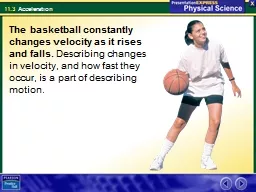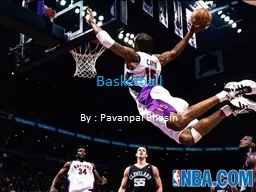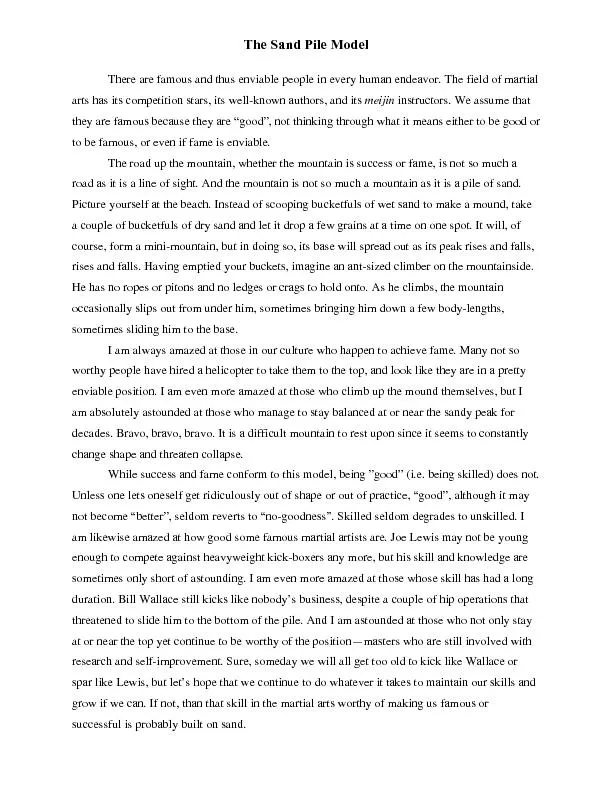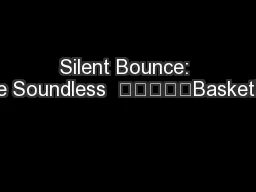PPT-The basketball constantly changes velocity as it rises and falls.
Author : liane-varnes | Published Date : 2018-09-25
Describing changes in velocity and how fast they occur is a part of describing motion How are changes in velocity described The rate at which velocity changes is
Presentation Embed Code
Download Presentation
Download Presentation The PPT/PDF document "The basketball constantly changes veloci..." is the property of its rightful owner. Permission is granted to download and print the materials on this website for personal, non-commercial use only, and to display it on your personal computer provided you do not modify the materials and that you retain all copyright notices contained in the materials. By downloading content from our website, you accept the terms of this agreement.
The basketball constantly changes velocity as it rises and falls.: Transcript
Download Rules Of Document
"The basketball constantly changes velocity as it rises and falls."The content belongs to its owner. You may download and print it for personal use, without modification, and keep all copyright notices. By downloading, you agree to these terms.
Related Documents














